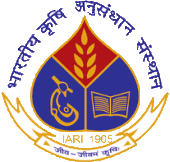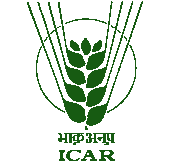INTRODUCTION
Reliable forecasts of production / yield of crops are of considerable help in planning, formulation and implementation of policies relating to food procurement, distribution etc. The forecasts provided need to be timely (well in advance before harvest), objective, consistent and comprehensible to decision makers with reasonable precisions. There is also considerable loss in the yield of the crop as well as quality of produce due to the infestation of various crop pests and diseases. Such losses can be reduced to a considerable extent if their occurrence is known in advance so that timely remedial measures may be taken up. For application of these remedial measures one must have prior knowledge of the time and severity of the outbreak of these pests and diseases. Various organisations in India and abroad are engaged in developing methodology for pre harvest forecast of crop yields / forewarning of pest & diseases using various approaches. Weather is an important factor, which affects the crop production as well as infestation in various crop pests and diseases. There is thus a need to develop statistically sound objective forecasts of crop yield as well as forewarning pests / diseases on the basis of weather parameters so that reliable forecasts can be obtained.
Most of the earlier workers have utilised regression models (taking data as such or suitable transformation of data or some indices or principal components), probability models based on Markov chain theory, Bayesian approach, curvilinear models, discriminant function analysis, agro-meteorological models, etc for crop yield / pests & diseases forewarning. Recently artificial neural networks (ANNs) techniques has become the focus of much attention, largely because of their wide range of applicability and the ease with which they can treat complicated problems even if the data are imprecise and noisy. From statistical perspective, neural networks are interesting because of their potential use in prediction. These techniques are being successfully applied across an extraordinary range of problem domains, in areas as diverse as finance, medicine, engineering, geology, physics, biology and agriculture. The uses of ANN technique for crop yield forecasting as well as pests/diseases forewarning has not been fully explored. ANNs are data driven self adaptive methods in that there are a few prior assumptions about the models for problems under study. On the basis of examples, subtle functional relationalships among the data are captured even if the underlying relationships are unknown or hard to describe. ANNs can identify and learn correlated patterns between input data sets and corresponding target values through training. After training, ANNs can be used to predict the outcome of new independent input data and have great capacity in predictive modelling i.e. all the characters describing the unknown situation can be presented to the trained ANNs, and then prediction of agricultural system may be feasible.
In the light of the points discussed above, the present investigation has been taken up to carry out detailed study on the usage of neural networks for forecast modelling.
Objectives
To develop weather and satellite derived vegetation and Agromet parameter based linear and non-linear models to forecast crop yield at spatial scale for wheat, rice, sugarcane and rabi pulses.
To develop weather-based spatial forewarning models for major pests of rice, potato, wheat, sugarcane and cotton.
To develop forecast system for up-scaling of ground-based models to those based on satellite-derived agro-met data products along with Integrated Pest Management (IPM) advisories.

